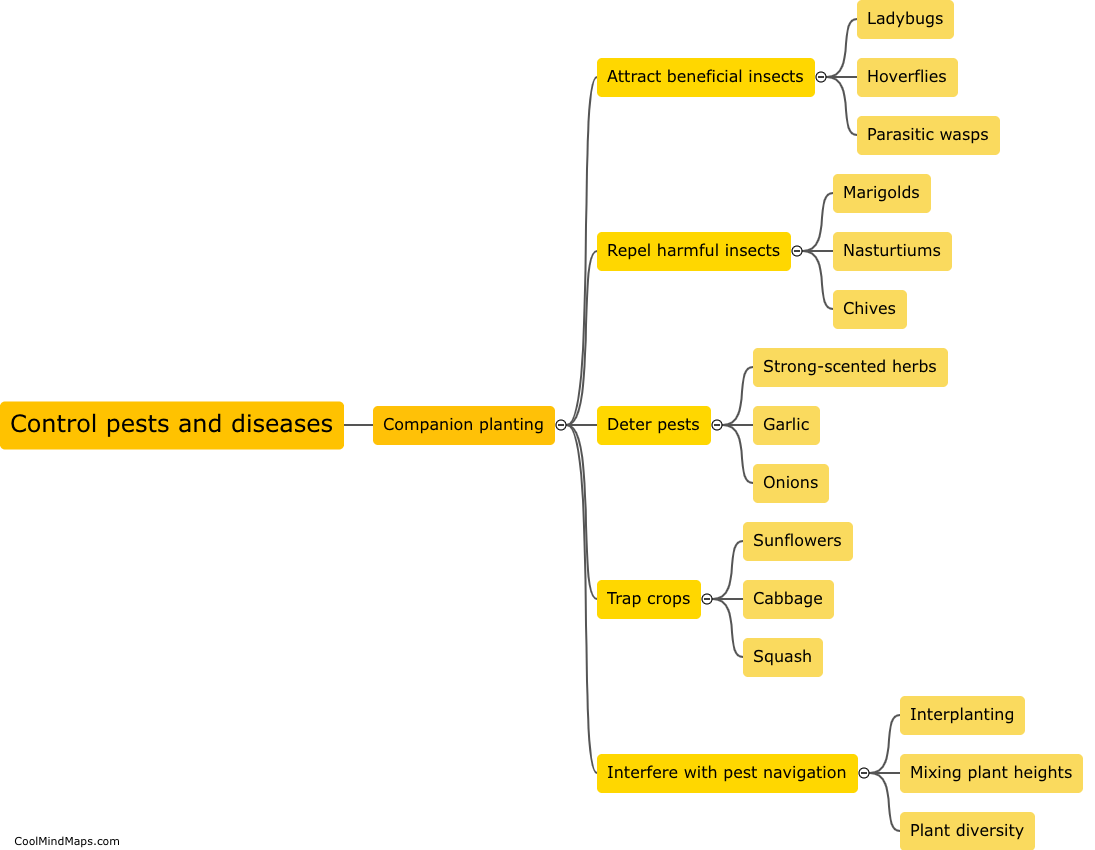How does companion planting promote biodiversity?
Companion planting refers to the practice of growing different crops together in harmony to benefit each other. This technique promotes biodiversity by creating a balanced and diverse ecosystem within the garden or farm. By carefully selecting and combining compatible plants, companion planting helps deter pests, attract beneficial insects, and enhance the soil fertility naturally. This diversity in plant species attracts a wider range of wildlife, including birds, bees, butterflies, and other pollinators. Additionally, the varied vegetation and root systems prevent soil erosion, improve water retention, and create microclimates that support a greater variety of organisms. Ultimately, companion planting encourages a more robust and sustainable environment that supports a thriving ecosystem, contributing to overall biodiversity conservation.

This mind map was published on 24 January 2024 and has been viewed 81 times.











